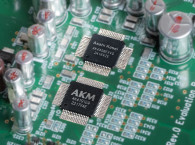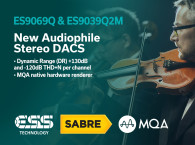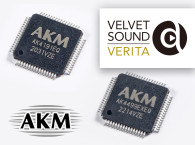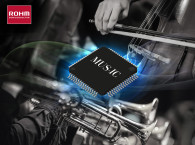
As John La Grou puts it, multi-path audio technology is an entirely new way of thinking about audio. There are already in the market microphone, preamplifiers and A/D converters that use a multi-path architecture to achieve a dynamic range of 160dB and translate that quality to a true 32-bit digital signal. Nevertheless, for reproduction, today's best DAC chips have been stuck around the 130dB dynamic range limit, and the new Imersiv D1 multi-path DAC, the first product from his new company, is said to be able to achieve 162dB, or 27-bits of dynamic range.
The Technical Overview
The new Imersiv D1 multipath DAC addresses one of the problems of Digital to Analog conversion: keeping the noise floor low enough to realize the full potential of the DAC bit-width. As an example, if we have a 26-bit DAC, we would like to have the full range, down to the least significant bit, free of noise. That is a dynamic range of 156dB, and to keep the noise below the least significant bit would allow a maximum noise level of less than 100nV broadband for a nominal 4V output signal. A tall order indeed.
Enter the Imersiv D1 DAC. The basic idea - detailed in John La Grou's "Dynamic Range Improvement in Digital to Analog Conversion via Multipath Topology," Audio Engineering Convention paper, presented at the 150th AES convention in June 2021 - consists in splitting the signal chain into two parallel paths, one processing the lower 19 bits, and the other processing the upper 7 bits. The required dynamic range for the lower 19 bit chain is now ‘only’ 114dB and that can be realized with very low noise.
But now we have created the not insignificant problem of accurately combining the analog outputs of the two chains in the correct ratio, while maintaining the low overall noise floor. The way Imersiv accomplishes this is an example of smart design engineering. The low path, comprising the 19 lower bits, is digitally multiplied by 128 (7 bits; 34dB) which brings them back to the original level, where a single DAC can convert the signal to analog with a noise floor of -106dBu. (The digital multiplication is loss- and noiseless).
Of course, the analog output is now 34dB too high, and that is corrected with a 34dB analog attenuator which can be designed to have minimal noise impact. After that attenuation this channel has a noise floor of -140dBu.
A similar processing is done with the top 7 bits, but now the gain is +8dB analog (low noise) giving a -106dBu noise level with a +8dBu analog output level.
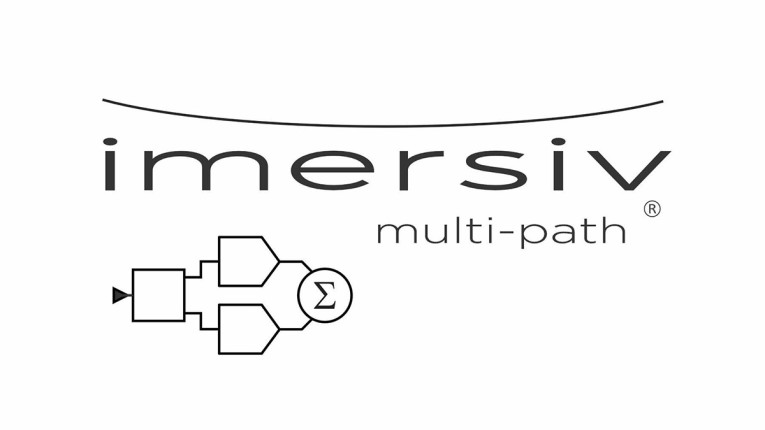
It is known from psycho-acoustic research that broadband noise can be inaudible when it is below a certain program level due to masking. So the two paths are not directly added together but the D1 uses a DSP-controlled gate that connects only the low path to the output when the program level is below -26dBu, thus preserving its extraordinarily -140dBu noise floor. When the program level rises above -26dBu the high path is added to the output. This does increase the noise floor, but with the higher program level it will still be below the perception threshold for audibility.
So there you have it: with -140dBu in low- and mid-program levels and more than 80dB below high level programs, the multi-path DAC achieves 26-bits of dynamic range. This represents at least an order of magnitude improvement over contemporary single path DA converters.
This concept is not without challenges. The analog attenuation of 34dB in the low-level path needs to be extremely accurate, with deviation of less than the DAC LSB step size, to maintain full scale 26 bit linearity. A 19-bit DAC has a step size of 1 in 524,000 of the output value. It is no sinecure to design, build and implement such an accurate analog attenuator, and keep it from drifting with time and temperature.
A similar argument can be made for the DSP controlled gate which connects to the output either the low-level path alone, or both the low- and high-level path in summing fashion, switching over at -26dBu program level. Finally, one might consider the 7-bit high-path DAC to be a relatively simple affair, but it also must be accurate to the least significant bit value of the complete system.
The AES brief that gives the full technical background for the Imersiv D1 lists several earlier attempts of using split-path DACs. Another good source of detailed technical information are the three patents related to the concept (US patents 9.590.648, 9.871.530, 10.256.782).
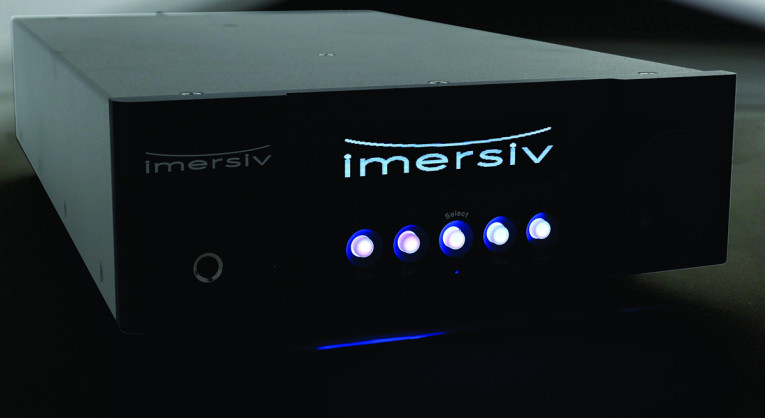
Completing the 32-bit Signal Chain
As John La Grou explains, multi-path technology has been around for at least 40 years. Maybe longer. It has been successfully implemented in microphone preamps and A/D converters, which allowed handling true 32-bit workflows with existing digital audio worskstations that are also able to translate true 32-bit audio and all its dynamic range. The Imersiv D1 DAC is able to take a 32-bit audio file, say a FLAC file, from a USB output, which is then broken into the two signal paths by the DSP, resulting in a high path and a low path.

"We're about 7-bits better performance [40dB] than any DAC made today, which is why we're calling it a paradigm shift. Note that 40dB is an objective audio improvement of 100X over today’s best DAC specifications," says John La Grou. Imersiv’s parent company, Millennia, is already leading front-end designer for critical audio recording, with over 50,000 hardware channels shipped. The HV-3 microphone preamplifier, a NAMM Technology Hall of Fame inductee, is one of the most-used front-ends for classical music recording, film scoring, and acoustic music.
La Grou also notes that "other imersiv high-dynamic products are planned or in development, including power amplifiers, A-to-D converters, and recording channels. At some point in the future, the professional audio industry will realize an entire 170dB recording ecosystem, from microphone to power amplifier, and everything in-between," he adds.
The Imersiv D1 Multi-Path DAC is now in beta testing and should be released to market mid-2024. Pricing is not yet established and La Grou has expressed interest in licensing the Imersiv patent suite to qualified companies.
www.imersiv.com




